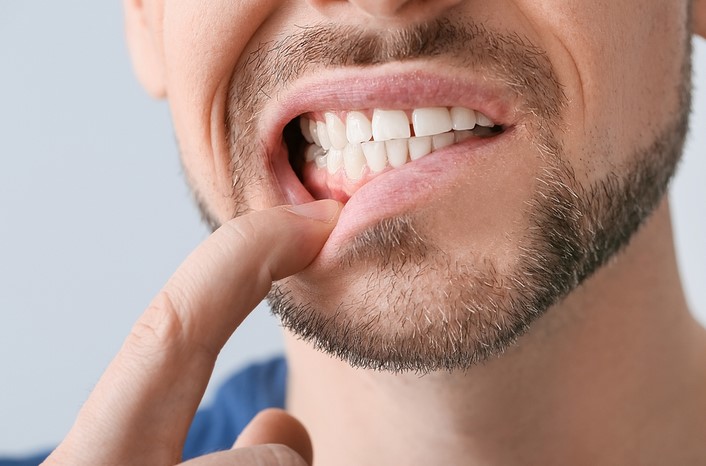Introduction
In recent years, there has been growing interest and excitement in the field of oral health as researchers explore the remarkable potential of gums to regenerate and grow back. This newfound understanding challenges conventional notions, offering hope for individuals seeking to restore their gum health and revitalize their smiles.

Gum recession is a common dental issue that affects millions of people worldwide. It occurs when the gum tissue that surrounds and protects the teeth wears away, exposing the tooth roots and potentially leading to sensitivity, decay, and even tooth loss. However, the good news is that gums can indeed grow back, thanks to advancements in dental care and a proactive approach to oral health. In this comprehensive guide, we will delve into the causes of gum recession, the importance of gum regrowth, and explore various methods and practices that promote the natural restoration of gum tissue.
Understanding Gum Recession
Gum recession, also known as gingival recession, is a gradual process that often goes unnoticed until it reaches a noticeable level. It can result from various factors, including poor oral hygiene, aggressive brushing, genetic predisposition, hormonal changes, tobacco use, gum disease (periodontitis), teeth grinding, and misaligned teeth. As the gum tissue recedes, the tooth’s roots become exposed, making them susceptible to decay and sensitivity. Additionally, the aesthetic aspect of receding gums can impact one’s smile and self-confidence.
The Importance of Gum Regrowth
Gum regrowth is crucial not only for maintaining a healthy smile but also for preserving the overall oral health. The gum tissue acts as a protective barrier against bacteria and food particles, preventing them from reaching the tooth roots and causing decay. When gums recede, this barrier weakens, increasing the risk of various dental problems. Regrowing gum tissue can reverse these effects, reducing sensitivity, preventing decay, and enhancing the appearance of the smile.
Methods for Promoting Gum Regrowth
1. Maintaining Proper Oral Hygiene: The foundation of gum regrowth is practicing good oral hygiene. Regular brushing, flossing, and rinsing with an antimicrobial mouthwash can prevent further gum recession and promote a healthier gumline.
2. Gentle Brushing: Aggressive brushing can contribute to gum recession. Using a soft-bristle toothbrush and employing a gentle brushing technique can protect the gums from further damage.
3. Dietary Changes: A diet rich in vitamins, minerals, and antioxidants can support gum health. Vitamin C, in particular, is essential for collagen production, which is vital for gum tissue regeneration.
4. Smoking Cessation: Tobacco use is a significant contributor to gum recession. Quitting smoking not only improves overall health but also enhances the chances of gum tissue regrowth.
5. Managing Teeth Grinding: If teeth grinding (bruxism) is a contributing factor to gum recession, wearing a nightguard can help prevent further damage and allow the gums to heal.
6. Treating Gum Disease: If gum recession is due to gum disease, seeking professional treatment from a dentist or periodontist is essential. Treating the underlying cause can halt the recession and allow for potential regrowth.
7. Gum Grafting: In cases where gum recession is advanced, a surgical procedure known as gum grafting may be recommended. During this procedure, a small piece of tissue is taken from another part of the mouth or a donor source and placed over the exposed tooth roots. This encourages the growth of new gum tissue.
8. Platelet-Rich Plasma (PRP) Therapy: PRP therapy involves using the patient’s own blood to create a concentrated solution rich in growth factors. This solution is then applied to the receding gum area to stimulate tissue regeneration.
9. Laser Treatment: Laser therapy can be used to remove diseased tissue and stimulate gum tissue regrowth. It is a minimally invasive procedure that promotes healing and regrowth.
10. Oil Pulling: While not scientifically proven, some individuals claim that oil pulling with coconut or sesame oil can improve gum health and promote regrowth.
Conclusion
Gum recession is a prevalent dental issue that can lead to discomfort, sensitivity, and more severe oral health problems. The good news is that with proper care and attention, gums can grow back naturally, restoring their protective function and enhancing the overall health and appearance of the mouth. Whether through improved oral hygiene practices, lifestyle changes, or professional treatments, promoting gum regrowth is an achievable goal. If you’re experiencing gum recession, consult with a dental professional to determine the underlying causes and the most suitable regrowth methods for your specific situation. Remember, a proactive approach to oral health can lead to a brighter, healthier smile in the long run.